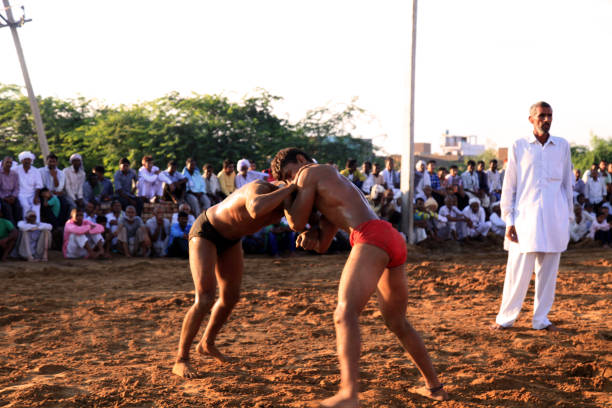General Rules of Wheelchair Fencing
Wheelchair fencing deserves more attention for its unique blend of athleticism, intellect, and inclusivity. Matches feature intense bouts of strategy as opponents battle to land legal touches on target areas. The mobility, reflexes, and coordination of fencers captivates audiences. By understanding classifications, right-of-way rules, target areas, and maneuvers, anyone can gain an appreciation for this exceptional adaptive sport.

This article covers the fundamentals of competitive wheelchair fencing to showcase why it warrants more enthusiasm. We’ll explain wheelchair classes, standard fencing equipment, basic techniques, target areas, and scoring. The parallels and differences to able-bodied fencing provide insight into gameplay. Once informed about rules and skills, the sheer focus, precision, and dexterity of these athletes shines through. Wheelchair fencing has earned recognition as an engaging spectator sport full of drama and mastery. Let’s begin by looking at the different wheelchair classifications.
Equipment Needed for Wheelchair Fencing
In order to engage in wheelchair fencing, you’ll need a few pieces of specialized equipment.
First, you’ll need to consider your wheelchair selection. Many fencing styles require a lightweight wheelchair that can turn quickly and provide stability. This is especially true if you’re participating in individual fencing. You’ll want to make sure that the wheelchair has a tall back and a strong frame that won’t move around while fencing.
The second piece of equipment is a fencing mask. The mask should be made of high-quality mesh to ensure that you remain safe and protected while fencing. It should fit snugly around your face and offer good visibility. The mask should also have adjustable straps to ensure that it stays in place while you’re moving around.
The third piece of equipment you’ll need is a glove. This should protect your hand and provide a good grip while you’re fencing. You can pick from a variety of styles, including leather gloves or ones with plastic tips. Additionally, the glove should be comfortable and allow you to move your fingers freely.
Finally, you’ll need a fencing weapon. This can be a foil, saber, or epee depending on the style of fencing you’re participating in. The weapon should be lightweight and offer a good balance of flexibility and strength. It should also be comfortable to hold and have a good grip.
These are the basic pieces of equipment needed for wheelchair fencing. With the right equipment in hand, you’ll be ready to start your fencing journey. Be sure to consult with your coach or instructor for any additional equipment that you may need.
Stance and Positioning for Wheelchair Fencing
Once you have the necessary equipment, you’ll need to learn the correct stance and positioning for wheelchair fencing. Wheelchair fencing has some unique techniques that must be adapted for the sport. It requires a combination of physical strength and agility to move the wheelchair in a controlled manner. The key to a good stance is to maintain a balance between the upper and lower body, as well as keeping the body in an upright position.
The feet should be flat on the footrests, which should be adjusted to the proper height for the individual. The hips should be at a 90-degree angle and the back should be straight. The arms should be comfortably held with the elbows slightly bent, and the hands and wrists should be relaxed. The wheelchair should be kept as close to the piste as possible, and the fencing arm should be held in a slightly forward position.
When lunging, the wheelchair should be pushed forward with the fencing arm in an extended position, and the back foot should remain in contact with the floor. When retreating, the wheelchair should be pushed backward with the fencing arm in a retracted position. It’s important to remember that the wheelchair should remain in control while lunging and retreating.
The arms should be used to control the wheelchair during advanced moves, such as parries and remises. To perform a parry, the fencing arm should be moved in a circular motion and the wheelchair should be turned in the opposite direction. To perform a remise, the fencing arm should be extended in the direction of the opponent and the wheelchair should be pushed forward.
With proper practice and technique, wheelchair fencing can be enjoyed by all. Adapting the techniques to suit individual needs and abilities is an important part of the sport. With the correct stance and positioning, wheelchair fencers can use their physical strength and agility to their advantage in the sport.
Scoring System in Wheelchair Fencing
You should understand the scoring system of wheelchair fencing to be successful. Wheelchair fencing is a sport that has been adapted from traditional fencing to accommodate people with disabilities. It requires a unique set of rules and regulations that must be followed.
Here are some of the important elements of the scoring system for wheelchair fencing:
- Medical considerations: It’s important to keep in mind any medical considerations that may affect a participant’s ability to fence. This could include a medical condition that could affect their mobility or overall health.
- Wheelchair maintenance: Proper wheelchair maintenance is essential for safety. Fencing in a wheelchair can be physically demanding and it’s important to make sure that the wheelchair is well maintained and in good working order.
- Strategy: Wheelchair fencing requires a unique set of strategies in order to be successful. It’s important to understand the different strategies and how they can be used to maximize a fencer’s chances of winning.
The scoring system for wheelchair fencing is designed to be fair and to give each participant an equal chance at success. It’s important to understand the rules and regulations of the sport to be able to effectively compete.
To be successful, a participant must have an understanding of the scoring system, medical considerations, wheelchair maintenance, and strategy. With the right preparation and knowledge, one can become a successful wheelchair fencer.
Safety Guidelines for Wheelchair Fencing
You must follow certain safety guidelines when participating in wheelchair fencing. It is important to ensure that all competitors are aware of the rules of the sport and the risks that may be involved. To help keep athletes safe, wheelchair fencing has a number of specific safety guidelines that must be followed.
The following table provides an overview of the safety guidelines for wheelchair fencing:
| Timing Drills | Before each bout, athletes must complete timing drills to warm up and ensure that they are able to move quickly and accurately. | Fitness Exercises | All athletes must complete a series of specific fitness exercises to ensure that they maintain good posture and balance while fencing. | Equipment Check | All equipment must be checked and approved before each bout to ensure that it is in good condition and does not pose a safety risk to the athlete. | Protective Gear | All athletes must wear protective gear such as helmets and gloves during bouts to protect them from injury. |
In addition to the safety guidelines listed above, athletes must follow all rules of the sport and the referee’s instructions at all times. Fencing can be dangerous if not done correctly, so it is essential that all participants have a clear understanding of the rules and safety guidelines. By following the safety guidelines outlined here, athletes can enjoy a safe and enjoyable experience while participating in wheelchair fencing.
Rules of Engagement for Wheelchair Fencing
Your engagement in a wheelchair fencing bout is guided by a set of rules. The rules of wheelchair fencing are designed to ensure fair play and the safety of all participants. These rules apply to all wheelchair fencing events and must be followed by all competitors.
- Wheelchair access must be provided for all fencing events.
- All participants must show respect for the disability of their opponents.
- Disability representation must be taken into account when making tournament decisions.
Wheelchair fencing is a sport that requires a high degree of skill and strategy. The rules of the game can be quite complex, but they’re essential for ensuring that all participants get a fair chance at success. The rules are designed to ensure that the game is played in an orderly and safe manner.
In wheelchair fencing, all participants must be provided with equal access to the equipment and playing area. This includes making sure that the playing area is wheelchair accessible and that the fencing equipment is suitable for use by competitors in wheelchairs. All participants must show respect for the disability of their opponents and mustn’t use any form of ridicule or discrimination while fencing.
In addition, disability representation must be taken into account when making tournament decisions. This means that any participant who’s a physical disability must be given a fair chance to compete. These rules are essential for ensuring that all competitors get the chance to experience the thrill of wheelchair fencing and to show their skills in a safe and enjoyable environment.
The rules of wheelchair fencing are designed to ensure that all participants get the chance to experience the joys of the sport without fear of discrimination or ridicule. By following these rules, wheelchair fencing can be enjoyed by everyone and can be a great way to show off your skill and strategy.
Strategies and Tactics for Wheelchair Fencing
Strategies and tactics are essential for success in wheelchair fencing, and understanding them can help you gain an edge over your opponents. One of the most important strategies is to plan your attack and defense well in advance. This means understanding the rules of engagement, the court layout, and the best way to move around the court. You should also consider the strengths and weaknesses of your opponents and how to exploit them.
Another key strategy is to practice mental preparation. This includes visualization and positive self-talk techniques to help you stay calm and focused during a match. It is also important to be aware of your opponent’s movements and anticipate what they will do next. You can also use strategizing techniques to outwit your opponent and gain the upper hand.
| Technique | Description |
|---|---|
| Attack and Defense Planning | Understanding rules, court layout, and best way to move around court |
| Mental Preparation | Visualization and positive self-talk to stay focused during match |
| Anticipation | Awareness of opponent’s movements and predicting their next move |
| Strategizing | Outwitting opponent to gain upper hand |
Wheelchair Fencing Etiquette
Anyone participating in wheelchair fencing should adhere to the etiquette of the sport. Wheelchair fencing has its own unique set of rules and etiquette, and it’s important that all participants abide by them. To ensure the smooth running of a match, wheelchair fencing etiquette must be respected. Here are three main points of etiquette to keep in mind:
- Respect your opponent: This means refraining from trash-talking and maintaining a level of sportsmanship.
- Follow the referee’s instructions: The referee knows the rules of the game, so it’s important to listen to their directions and act accordingly.
- Maintain focus: It’s important to keep your mind on the match and be aware of your surroundings.
Wheelchair fencing etiquette also applies to the general behavior of participants. It’s important to stay mindful of your behavior, as it can have an impact on the outcome of a match. It’s best to stay calm and collected, and to not get too aggressive or emotional. It’s also important to be respectful and courteous to your fellow participants.
Wheelchair fencing etiquette goes beyond the rules of the game. It’s also important to be mindful of how you dress and act. All participants should dress appropriately for the sport and refrain from wearing anything that might be considered disrespectful. Additionally, participants should respect the space of their competitors and not attempt to interfere in any way.
Frequently Asked Questions
What Are the Eligibility Requirements for Wheelchair Fencing?
To be eligible for wheelchair fencing, you must have a disability that causes limited mobility in the lower limbs. Your equipment must meet the requirements set by the referee. This includes a wheelchair that’s fit for competition, a mask, a jacket, a glove, and a weapon.
All fencing equipment must be up to date and meet the referee’s guidelines. Additionally, you must have a valid competition license.
With the right equipment and license, you can participate in wheelchair fencing and enjoy the sport.
Is There a Minimum Age Requirement for Wheelchair Fencing?
Yes, there’s a minimum age requirement for wheelchair fencing. Individuals must be at least 12 years old in order to participate.
Younger children and those with special needs may be allowed to participate with special adaptive techniques, wheelchair design, and instructor supervision.
Wheelchair fencing is an activity that can be enjoyed by people of all ages, and encourages physical activity, social interaction, and the development of personal and strategic skills.
How Often Are Tournaments Held for Wheelchair Fencing?
Tournaments for wheelchair fencing are held around the world on a regular basis. On average, there are approximately 20 tournaments a year, with some countries hosting multiple events in the same year.
When it comes to equipment needs, tournament formats vary depending on the type of fencing you’re participating in. For example, electric wheelchair fencing requires a special electric wheel and an electric foil or saber. Additionally, competitors must wear the appropriate protective gear, such as a jacket, glove, and mask.
Are There Any Special Considerations for Wheelchair Fencing in Terms of Insurance?
When it comes to wheelchair fencing, insurance is an important consideration. Depending on the event, insurance costs may vary. It’s important to check with the event organizers to understand what the insurance requirements are.
Generally, insurance is required for events in order to cover any potential claims that may arise. The claims process can involve paperwork, and any other documentation that’s required by the insurance provider.
It’s important to ensure that everything is in order before the event to ensure a smooth claims process if something happens.
Are There Any Recommended Strength and Conditioning Exercises for Wheelchair Fencing?
You’re ready to ramp up your wheelchair fencing routine with some strength and conditioning exercises!
Start by stretching to warm up your muscles and joints. Focus on your arms, shoulders, and core to increase flexibility and prevent injury.
Then, move on to cardiovascular workouts that will increase your endurance. Try incorporating circuits of cardio exercises like jogging, rowing, and biking.
Finally, use resistance training to build strength in your arms and shoulders. Try using light weights with high repetitions to maximize the effects.
With a consistent routine of strength and conditioning exercises, you’ll be ready to fence at your best!
Fencing in a wheelchair can be a thrilling experience that requires both skill and strategy. It’s an activity that can be enjoyed by all, provided the safety guidelines are followed and the etiquette respected.
With the right equipment, techniques, and attitude, you can have a great time fencing in a wheelchair, and create memories that will last a lifetime.





